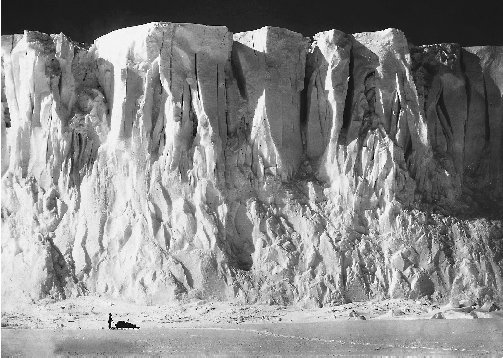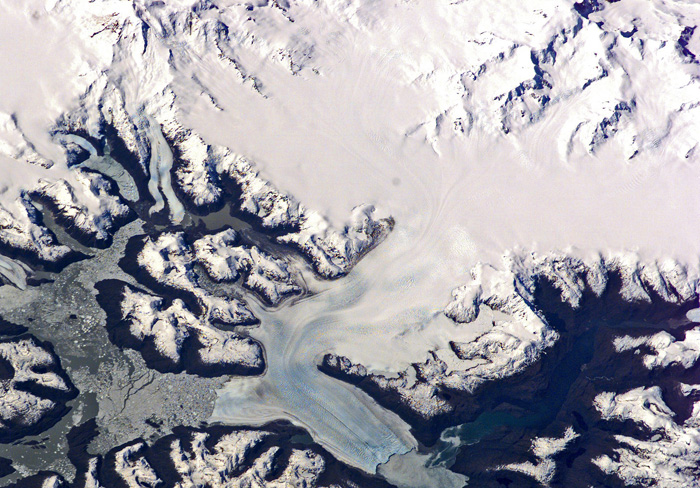Various types of paleoclimatic evidence suggest that the climate of the Earth has varied over time. The data suggests that during most of the Earth's history, global temperatures were probably 8 to 15° Celsius warmer than they are today. However, there were periods of times when the Earth's average global temperature became cold. Cold enough for the formation of alpine glaciers and continental glaciers that extended in to the higher, middle and sometimes lower latitudes. In the last billion years of Earth history, glacial periods have started at roughly 925, 800, 680, 450, 330, and 2 million years before present (B.P.). Of these ice ages, the most severe occurred at 800 million years ago when glaciers came within 5 degrees of the equator.
The last major glacial period began about 2,000,000 years B.P. and is commonly known as the Pleistocene or Ice Age. During this glacial period, large glacial ice sheets covered much of North America, Europe, and Asia for long periods of time. The extent of the glacier ice during the Pleistocene, however, was not static. The Pleistocene had periods when the glaciers retreated (interglacial) because of mild temperatures, and advanced because of colder temperatures (glacial). Average global temperatures were probably 4 to 5° Celsius colder than they are today at the peak of the Pleistocene. The most recent glacial retreat began about 14,000 years B.P. and is still going on. We call this period the Holocene epoch.
In North America, the Pleistocene glaciers began their formation in the higher altitudes of the Rocky Mountains, and high latitude locations in Greenland and north-central Canada. From these locations, the ice spread in all directions following the topography of the landscape. In North America, the glaciers from the Rocky Mountains and north-central Canada met each other in the center of the continent creating an ice sheet that stretched from the Pacific to the Atlantic ocean. At their greatest extent, the ice sheets of North America covered most of Canada and extended into the United States to a latitude of about 40° North.
A similar pattern of glaciation has also been scientifically documented in Europe and Asia. In Eurasia, ice sheets had their birth place in the Alps Mountains, Scandinavia, northern British Isles, and northern Siberia. The ice sheets of Eurasia, however, did not form a single ice sheet through convergence and their furthest extent south was limited to a latitude of about 45° North.
Occurrence and Types of Glaciers
Today, glacial ice covers about 10% of the Earth's land surface. During the height of the Pleistocene, ice sheets probably covered about 30%. Currently, the most extensive continental glaciers are found in Antarctica and Greenland. We can also find smaller glaciers at higher elevations in various mountain ranges in the lower, middle, and higher latitudes.
Glaciers can be classified according to size. Continental glaciers are the largest, with surface coverage in the order of 5 million square kilometers. Antarctica is a good example of a continental glacier (Figure 10ad-1).

Figure 10ad-1: Antarctica glacier.
Mountain or alpine glaciers are the smallest type of glacier. These glaciers can range in size from a small mass of ice occupying a cirque to a much larger system filling a mountain valley (Figure 10ad-2). Some mountain glaciers are even found in the tropics. The merger of many alpine glaciers creates the third type of glacier, piedmont glaciers. Piedmont glaciers are between several thousand to several tens of thousands of square kilometers in size.


Figure 10ad-3: The merging of many alpine glaciers at the top of this image produces a large ice field, Southern Patagonian Ice Field, Chile. The Brüggen Glacier is located at the bottom-center of the image. (Source: NASA - Visible Earth).
CITATION
Pidwirny, M. (2006). "Introduction to Glaciation". Fundamentals of Physical Geography, 2nd Edition. Date Viewed. http://www.physicalgeography.net/fundamentals/10ad.html
